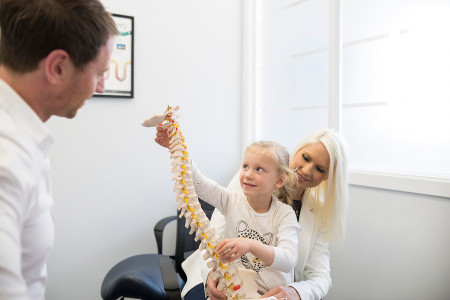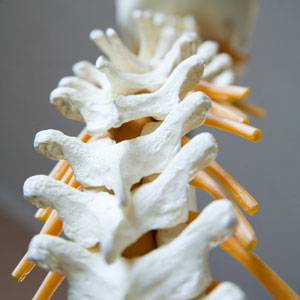Current Research
At Inline Health Chiropractic we pride ourselves on delivering evidence based, well researched treatments. Here are some of the top research articles used to help formulate some of our treatments and management strategies.
1. Chiropractic Beneficial for Dizziness and Balance Problems
This study looked at the problem of dizziness and balance disorders in the general population. They found that patients who sought chiropractic care for help had the highest success rate in recovery, especially in patients over 65 years-of-age, patients with neck injuries, and those with neurological/muscular issues.
Dizziness and Balance: Ndetan H, Hawk C, Sekhon VK, Chiusano M. The role of chiropractic care in the treatment of dizziness or balance disorders: analysis of National Health Interview Survey data. Journal of Evidence-Based Complementary & Alternative Medicine 2015;Sep 11; pii: 2156587215604974.
2. Chiropractic Best Solution for Musculoskeletal Pain
 This Swiss study compared people with spinal, hip, or shoulder pain who visited a medical doctor with those who saw a chiropractor for their initial visit. The authors found that people who saw a chiropractor had less pain, greater satisfaction, and spent less money on their care.
This Swiss study compared people with spinal, hip, or shoulder pain who visited a medical doctor with those who saw a chiropractor for their initial visit. The authors found that people who saw a chiropractor had less pain, greater satisfaction, and spent less money on their care.
Best Solution for Musculoskeletal Pain: Houweling TAW, Braga AV, Hausheer T, et al. First-Contact Care With a Medical vs Chiropractic Provider After Consultation With a Swiss Telemedicine Provider: Comparison of Outcomes, Patient Satisfaction, and Health Care Costs in Spinal, Hip, and Shoulder Pain Patients. Journal of Manipulative and Physiological Therapeutics 2015;38(7):477-83.
3. Chiropractic Helps Fibromyalgia Patients
This study in Rheumatology International found that fibromyalgia patients who saw an upper cervical chiropractor had more symptom relief and better outcomes than those who did not receive chiropractic care.
Beneficial for Fibromyalgia: Moustafa IM, Diab AA. The addition of upper cervical manipulative therapy in the treatment of patients with fibromyalgia: a randomized controlled trial. Rheumatology International 2015;35(7):1163-1174.
4. Chiropractic Relieves Symptoms of COPD
Chronic Obstructive Pulmonary Disease (COPD) is a very difficult problem. This recent review looked at the scientific literature and found that studies show that chiropractic care can improve patient lung function and exercise performance.
Chiropractic for COPD: Wearing J, Beaumont S, Forbes D, Brown B, Engel R. The Use of Spinal Manipulative Therapy in the Management of Chronic Obstructive Pulmonary Disease: A Systematic Review. Journal of Alternative and Complementary Medicine. 2015 (December 24)
5. Chiropractic Best for Lower Back Pain
In this study patients receiving Manual Chiropractic Manipulation demonstrated better clinical outcomes and a quicker recovery from lower back pain than patients receiving standard medical treatments or other mechanically assisted treatments after 4 weeks of care
A Comparison of Spinal Manipulation Methods and usual Medical care for Acute and Sub-Acute Low Back Pain: A Randomized Clinical Trial.
Schneider, Michael DC, PhD; Haas, Mitchell DC, MA; Glick, Ronald MD; Stevans, Joel DC; Landsittel, Doug PhD. The Spine Journal: November 2014 doi: 10.1097/BRS.0000000000000724 Randomized Trial.

6. Chiropractic manipulation better than joint mobilisation for acute neck pain
Manipulation of the cervical spine using the Chiropractic HVLA thrust technique resulted in better outcomes than physiotherapy model neck mobilisation.
Upper Cervical and Upper Thoracic Thrust Manipulation versus Non thrust Mobilization in Patients With Mechanical Neck Pain: A Multicenter Randomized Clinical Trial. Authors: James R. Dunning, DPT, MSc Manip Ther, FAAOMPT1, Joshua A. Cleland, PT, PhD2, Mark A. Waldrop, DPT, Cert SMT3, Cathy Arnot, DPT, FAAOMPT4, Ian Young, PT, DSc5, Michael Turner, PT, FAAOMPT6, Gisli Sigurdsson, PT, MSc Manip Ther7. Published: Journal of Orthopaedic & Sports Physical Therapy, 2012, Volume: 42 Issue: 1 Pages: 5-18 doi:10.2519/jospt.2012.3894.
7. Spinal Manipulative Therapy with home exercise resulted in greater pain reduction after 12 weeks of treatment
Compared with combined supervised exercise programs with Home Exercise programs and Home Exercise programs alone. Supervised exercise sessions added little benefit to the Home Exercise alone program. These outcomes where observes in people over the age of 65 yo.
Spinal manipulative therapy and exercise for seniors with chronic neck pain. Michele Maiers, DC, MPHa, , , Gert Bronfort, DC, PhDa, Roni Evans, DC, MSa, Jan Hartvigsen, DC, PhDb, Kenneth Svendsen, MSc, Yiscah Bracha, MSd, Craig Schulz,DC, MSa, Karen Schulz, DCe, Richard Grimm, MD, PhD. The Spine Journal Volume 14, Issue 9, 1 September 2014, Pages 1879-1889
8. Treatment of the cervical spine may be the key to prevention of post concussion syndrome after trauma to the brain
Cervical manipulation and exercise rehabilitation are staples in modern chiropractic practice. Application of these techniques to correct slight cervical sprains and cervical dysfunction suffered in a traumatic injury may be the best evidence treatment to cure post concussion syndrome.
The Role of the Cervical Spine in Post Concussion Syndrome: Cameron M. Marshall, Howard Vernon, John J. Leddy & Bradley A. Baldwin
The Physician and Sports Medicine, published online 10 July 2015. DOI: 10.1080/00913847.2015.106430
9. Spinal manipulation therapy for degenerative disc disease
In this new study, researchers in Spain looked at 40 men with diagnosed degenerative disc disease. Half of the men were treated with spinal manipulation, while the other half received a placebo treatment that did not adjust the spine.
The study found that the patients who received a single adjustment:
Reported less pain
Had increased spinal mobility
Had better hip flexion
Had a significant, measurable increase in height
Vieira-Pellenz F, Oliva-Pascual-Vaca A, Rodriquez-Blanco C, et al. Short-term effect of spinal manipulation on pain perception, spinal mobility, and full height recovery in male subjects with degenerative disk disease: a randomized controlled trial. Archives of Physical Medicine and Rehabilitation 2014;95:1613-19.
10. Best clinical outcomes for lower back pain sufferers obtained with chiropractic management
Doctors of chiropractic are well suited to diagnose, treat, co-manage, and manage the treatment of patients with low back pain disorders. (J Manipulative Physiol Ther 2016;39:1-22)
Clinical Practice Guideline: Chiropractic Care for Low Back Pain. Gary Globe, PhD, MBA, DC, a Ronald J. Farabaugh, DC, b Cheryl Hawk, DC, PhD, c Craig E. Morris, DC, d Greg Baker, DC, e Wayne M. Whalen, DC, f Sheryl Walters, MLS, g Martha Kaeser, DC, MA, h Mark Dehen, DC, i and Thomas Augat, DC

11. Scoliosis treatment
Scoliosis treatment using a combination of manipulative and rehabilitative therapy: a retrospective case series. Chiropractic Biophysics treatment of Scoliosis n the adult patient is shown to be significantly clinically effective in reducing Cobb angle in adult and child patients.
BMC Musculoskeletal Disorders 2004;5:32 Published Morningstar et al; licensee BioMed Central Ltd. 2004,14 September 2004.
12. Scientific Exercises Approach to Scoliosis (SEAS): efficacy, efficiency and innovation
Scientific exercise approach to scoliosis is often associated with positive outcomes for scoliosis treatment and management. These exercises are specifically designed to improve balance, posture, position sense and clinical outcomes for scoliosis patients.
Scientific Exercises Approach to Scoliosis (SEAS): efficacy, efficiency and innovation. Romano M , Negrini A , Parzini S , Negrini S. ISICO (Italian Scientific Spine Institute), Via Carlo Crivelli 20, 20122 Milan, Italy. michele.romano@isico.it. Studies in Health Technology and Informatics [2008, 135:191-207]
13. Chiropractic patients have fewer imaging tests and less surgery
Researchers looked at 747 patients who were treated for back pain. The study found that patients who saw a chiropractor instead of a medical doctor had fewer x-rays and MRIs, were less likely to have surgery for their pain, and had lower healthcare costs.
Fritz JM, Kim J, Dorius J. Importance of the type of provider seen to begin health care for a new episode of low back pain: associations with future utilization and costs. Journal of Evaluation in Clinical Practice. 2015(Sep 29).
14. WHO guideline for non-surgical management of chronic primary low back pain in adults in primary and community care settings.
The World health Organisation has listed Chiropractic spinal manipulation, soft tissue treatments and some professional exercise advice as the Gold standard for management of lower back pain. The WHO have completed a review of all the literature to date and have found these to be amongst the most beneficial treatments for lower back pain. These recommendations have been passed on to all Medical and allied health practitioners globally to ensure more evidence based practice.
https://www.who.int/publications/i/item/9789240081789

